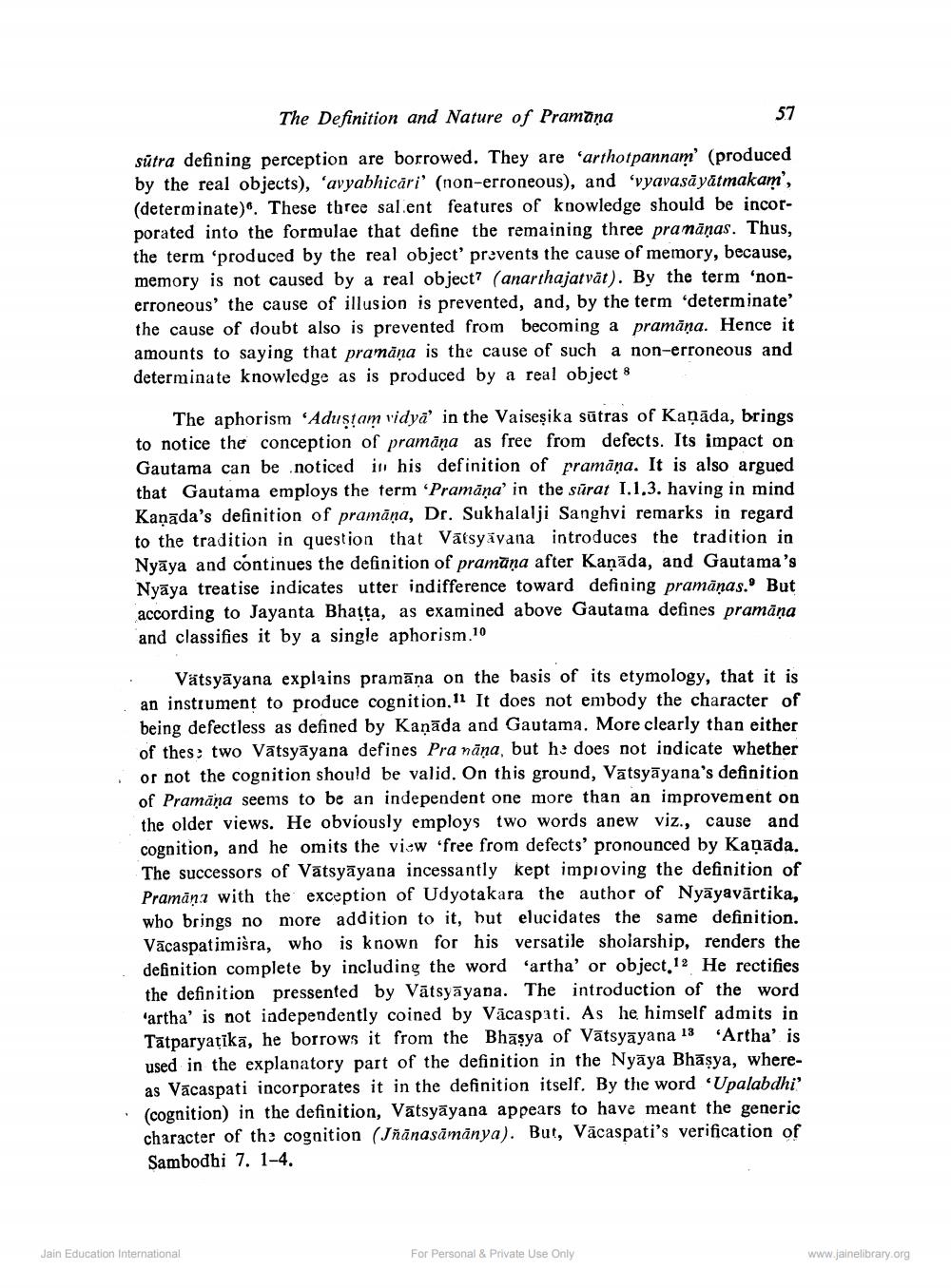________________
The Definition and Nature of Pramāņa
57
sūtra defining perception are borrowed. They are 'arthotpannam (produced by the real objects), 'avyabhicari' (non-erroneous), and "vyavasāyātmakam', (determinate). These three sal .ent features of knowledge should be incorporated into the formulae that define the remaining three pranāņas. Thus, the term 'produced by the real object' prevents the cause of memory, because, memory is not caused by a real object? (anarthajatvāt). By the term 'nonerroneous' the cause of illusion is prevented, and, by the term 'determinate' the cause of doubt also is prevented from becoming a pramāņa. Hence it amounts to saying that pramāņa is the cause of such a non-erroneous and determinate knowledge as is produced by a real object 8
The aphorism 'Adustam vidya' in the Vaiseșika sūtras of Kaņāda, brings to notice the conception of pramāņa as free from defects. Its impact on Gautama can be noticed in his definition of framāņa. It is also argued that Gautama employs the term “Pramāņa' in the sürat 1.1.3. having in mind Kaņāda's definition of pramāna, Dr. Sukhalalji Sanghvi remarks in regard to the tradition in question that Vātsyāvana introduces the tradition in Nyāya and continues the definition of pramāņa after Kaņāda, and Gautama's Nyāya treatise indicates utter indifference toward defining pramāņas. But according to Jayanta Bhatta, as examined above Gautama defines pramāņa and classifies it by a single aphorism.10
• Vätsyāyana explains pramāna on the basis of its etymology, that it is an instrument to produce cognition. 11 It does not embody the character of being defectless as defined by Kaņāda and Gautama. More clearly than either of thes: two Vātsyāyana defines Pra nāņa, but he does not indicate whether or not the cognition should be valid. On this ground, Vätsyāyana's definition of Pramāņa seems to be an independent one more than an improvement on the older views. He obviously employs two words anew viz., cause and cognition, and he omits the view 'free from defects' pronounced by Kaņāda. The successors of Vatsyāyana incessantly kept improving the definition of Pramāņı with the exception of Udyotakara the author of Nyāyavārtika, who brings no more addition to it, but elucidates the same definition. Vācaspatimjšra, who is known for his versatile sholarship, renders the definition complete by including the word 'artha' or object,12 He rectifies the definition pressented by Vātsyāyana. The introduction of the word 'artha' is not independently coined by Vācaspati. As he himself admits in Tātparyaţikā, he borrows it from the Bhāșya of Vātsyāyana 13 "Artha' is used in the explanatory part of the definition in the Nyāya Bhāsya, whereas Vacaspati incorporates it in the definition itself. By the word 'Upalabdhi' (cognition) in the definition, Vatsyāyana appears to have meant the generic character of the cognition (Jñānasāmānya). But, Vācaspati's verification of Sambodhi 7. 1-4.
Jain Education International
For Personal & Private Use Only
www.jainelibrary.org




